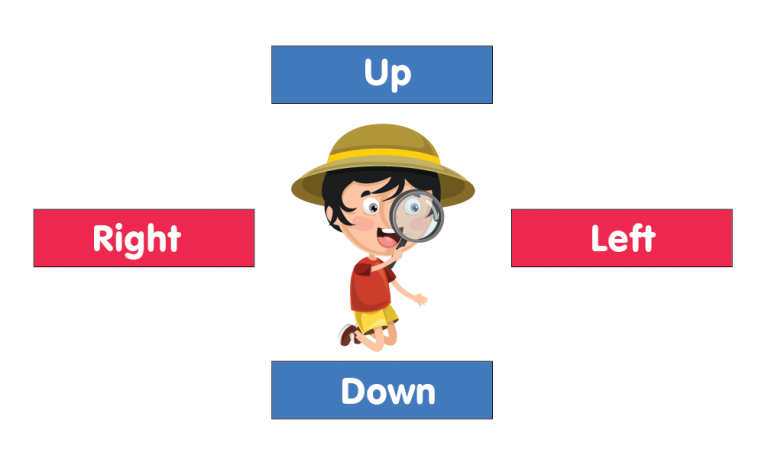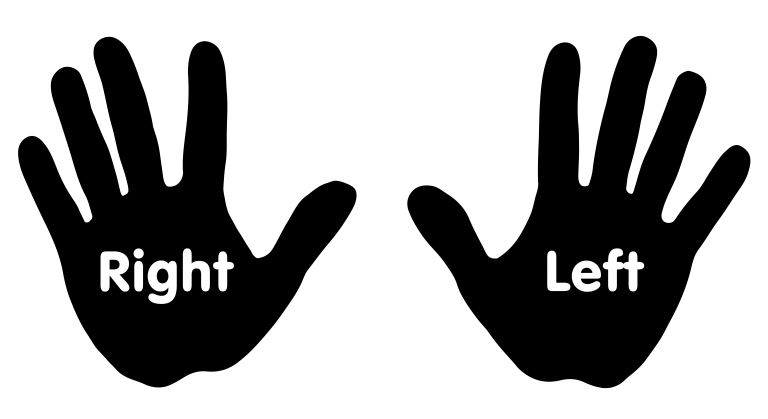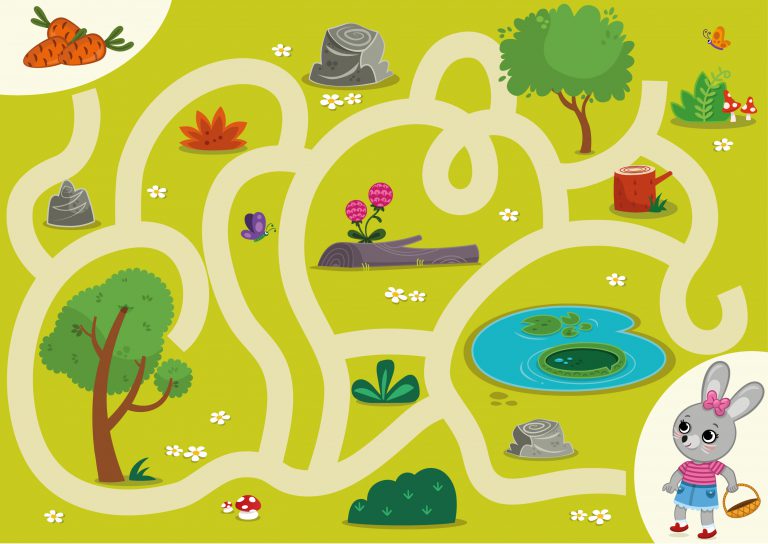Learning process of reading and writing is based on the child's spatial orientation skills (top, bottom, right, left, understanding of prepositions) and visual-motor coordination, especially eye-hand communication. When these functions are sufficiently developed, the child quickly understands from which side to start reading / writing, easily follows the line with the text, and also consistently writes letters in a line, without going beyond it.
Accordingly, if the child is not sufficiently oriented in space in general, it will also be difficult for him or her to navigate on a sheet of paper. Moreover, in the case of limited visual-motor coordination, child’s eyes can slide away from the line, which leads to the misunderstanding of the text.
Such difficulties can lead to serious problems with child’s ability to read. However, the training of spatial perception and visual-motor coordination from pre-school age will help not only to avoid that issues but allow the child to master literacy.
How to Develop Spatial Orientation
At the preschool age, it is very important for kids to develop the following skills:
- navigate in the scheme of own body;
- determine the location of objects in the space (near and far);
- change the spatial arrangement of objects;
- navigate on a sheet of paper;
- move in a given direction and change it.
It might be quite difficult for children to determine the distance to the objects, the volume, the depth of space, the allocation of the ratio between the different parts (objects) in the perceived space, the change in their position. It is important to teach children to measure objects in space, to determine their own location, to simulate different spatial situations. For this purpose, there are some exercises:
- Determine how many steps are to the desk, to the doll, to the intersection (on the street), etc.; who sits farther: Nikolai or Marina; who is higher: Sasha or Tolia, etc.
- Find the objects of the same ratio in size as the sample (two toys of different sizes).
- Show the ratio of two items by height using strips of different length, etc.
- Divide a circle, a square, a rectangle into 2, 4, 3 equal parts.
- Cut the ribbon into equal parts.
For older children, you can complicate the task, offering to determine the distance in centimeters, meters. It is also possible to use exercises and games for orientation in space (see below).
Based on the understanding of the scheme of the body, there are several games which can help the child to understand the concepts of right and left:
“Which hand?” - In the picture, a child needs to determine in which hand the girl is holding the box, in which hand the boy is holding the ball, on which leg the girl is standing, etc.
“Right-left” - The teacher suggests children play the following game: to name all the objects which are located on the right side, then - which are on the left side. The same can be done with older children on a sheet of paper with different images, but in the center, there should be a hint in the form of schemes or words.


“What's farther, what's closer to us in the room?” - Children answer the question and then check using several measuring instruments the correct answer.
“Name the highest and lowest items in the room” - Children name objects, explaining where they are located, and then compare some of them with a measuring instrument.
“Ladder” - Task: determine the location, for example, of the Smurf on the stairs. The adult asks the child to answer the questions in detail.
Questions:
- Who stands on the third (second) step from below/from above (on the top\bottom)?
- Where the Grouchy Smurf is sitting?
- Who is standing next to the stairs? “Pathfinder” - According to the figure-scheme of the room children try to find a hidden toy. Options can be different: children hide the toy themselves and draw a scheme of the room with the place where the toy is hidden or the adult is drawing the scheme.
How to Develop Good Eye-Hand Coordination
It is very important from an early age of the child to pay special attention to the coordination of the movements of the hands and eyes of the kid. Visual-motor coordination develops effectively while doing various motor exercises:
- walking and running,
- cycling on the lines and on the tracks;
- throwing various objects in games, like “Frisbee”, “Flying caps”, “Darts”, “Ring Toss”, “Hit the target”.
Very rewarding will be the tasks related to the drawing with the stencil and contour images, drawing geometric shapes.Repetition of movements and actions after adults also helps in developing a specified function.
Table games, such as, “Hockey”, ‘Basketball”, “Football”, “Billiards”, “City roads” and others contribute to the formation of the ability to trace moving objects and simultaneously assess their position in space.
Some games could be played just on the piece of paper:
- Labyrinths;
Tracking and circling with the index finger the trajectory of movements (then drawing the lines);
Tracking and circling with the index finger the trajectory of movements (then drawing the lines);
- Tracking and circling with the index finger the trajectory of movements (then drawing the lines);

Exercise “Eye Routes”. The child is invited to track the line with his eyes. Regular use of the described games and activities will prepare the child for the perception of letters and numbers, will help him or her navigate the sheet of paper, and most importantly – to be successful in further learning.